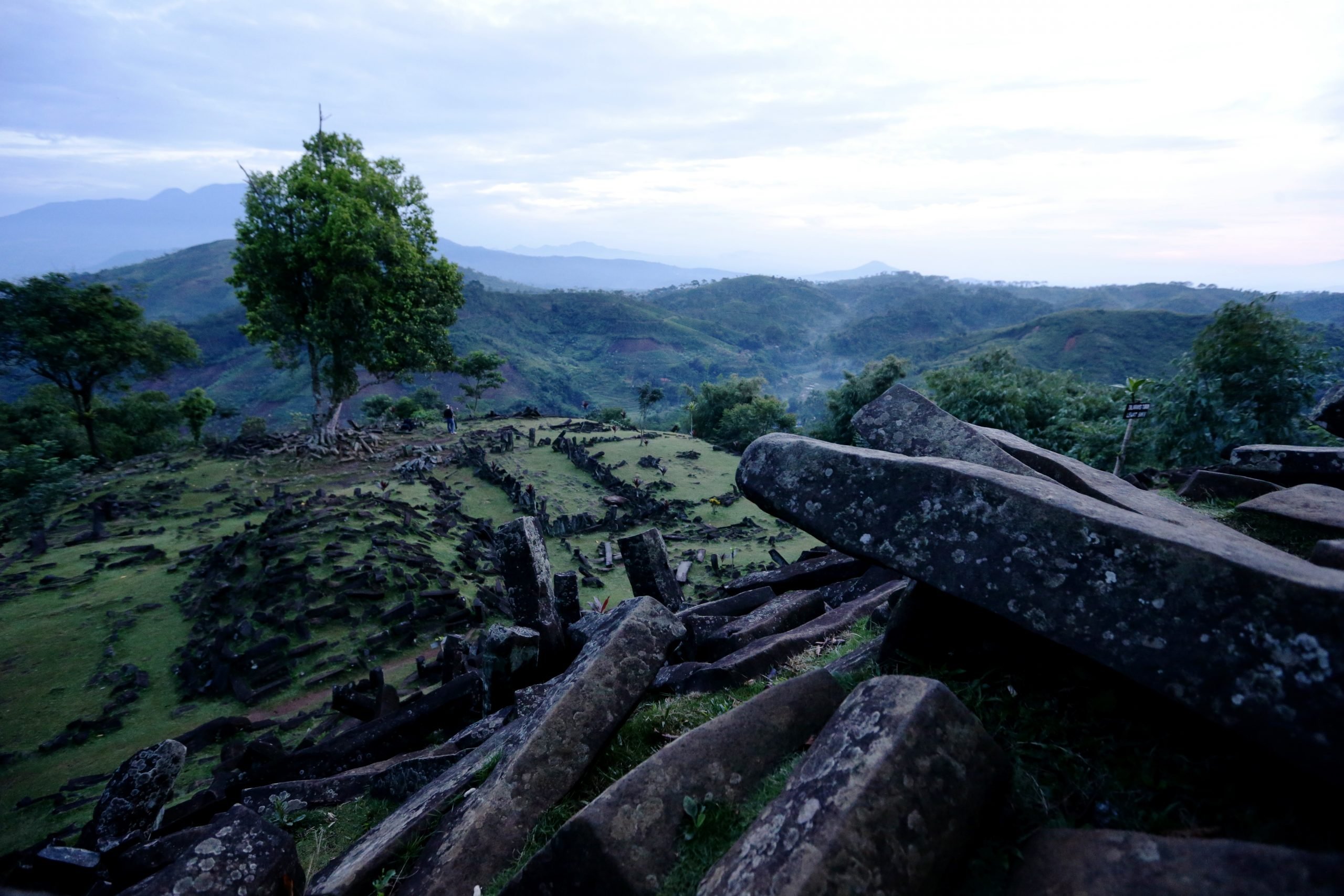
In October, a group of archaeologists dropped a bombshell study that claimed a structure in Java, Indonesia is a “multi-layered prehistoric pyramid” dating back “thousands of years B.C.E.”—predating Egypt’s oldest pyramid. Close scrutiny by other experts, however, is calling that research into question.
In the paper published in Archaeological Prospection, Indonesian geologist Danny Hilman Natawidjaja and his fellow researchers assert that the megalithic site of Gunung Padang, which consists of five terraces, was built as a pyramid as much as 27,000 years ago. Current estimates, in contrast, date the site to 5,000 B.C.E., at the earliest. The authors arrived at their findings by conducting ground penetration radar surveys and radiocarbon dating, among other studies.
Dating the site that far back completely upends what is understood about the Paleolithic era, during which hunter-gatherers lived in basic huts and wielded crude stone tools. It would also make the Gunung Padang far older than Turkey’s Göbekli Tepe, a Neolithic site dotted with carved stones, some 11,000 years old.
The study concluded that the builders of the Gunung Padang pyramid “must have possessed remarkable masonry capabilities, which do not align with the traditional hunter-gatherer cultures. The burial of these structures around 9,000 years ago adds further intrigue for reasons not fully understood.”
Not so, say other archaeologists, who are decrying the study’s findings. “I’m surprised [the paper] was published as is,” Flint Dibble, an archaeologist at the U.K.’s Cardiff University told Nature, which first reported on the controversy.
Aerial view of the Gunung Padang in the West Java Province of Indonesia. Photo: DigitalGlobe via Getty Images.
Chief among Dibble’s critiques are Natawidjaja’s claims that the four stone layers undergirding the Gunung Padang’s terraces contained stonework that was “meticulously sculpted,” indicating a human hand. According to the study, the layers were constructed at different stages, with each subsequent one featuring “regularly cut columnar rocks… arranged like bricks in a building.”
However, Dibble questioned the paper’s implication that the structure was built using “sophisticated construction techniques.” Speaking to Nature, he said the layers at the site could well have been the result of the natural movement of rocks or weathering.
“Material rolling down a hill,” he said, “is going to on average orient itself.”
Another archaeologist, Bill Farley of the Southern Connecticut State University, also pointed out to the publication that there exists no evidence that Gunung Padang was settled by an advanced civilization during the last Ice Age. The site’s soil samples could be dated back 27,000 years, but they don’t contain traces of human activity, such as bone fragments.
That the paper has been proofread by Graham Hancock has not helped its credibility. The British writer has long peddled unsubstantiated, pseudoscientific theories regarding ancient civilizations, lately with his controversial 2022 Netflix docuseries, Ancient Apocalypse, in which the Gunung Padang features in the first episode.
Archaeological Prospection has launched an investigation into the study, according to Nature, though Natawidjaja himself (who has long maintained these claims) welcomed the additional eyes and research on the site.
“We know very little about our human history,” he said.
More Trending Stories:
Art Critic Jerry Saltz Gets Into an Online Skirmish With A.I. Superstar Refik Anadol
Your Go-To Guide to All the Fairs You Can’t Miss During Miami Art Week 2023
The Old Masters of Comedy: See the Hidden Jokes in 5 Dutch Artworks
David Hockney Lights Up London’s Battersea Power Station With Animated Christmas Trees
On Edge Before Miami Basel, the Art World Is Bracing for ‘the Question’
Thieves Stole More Than $1 Million Worth of Parts From an Anselm Kiefer Sculpture